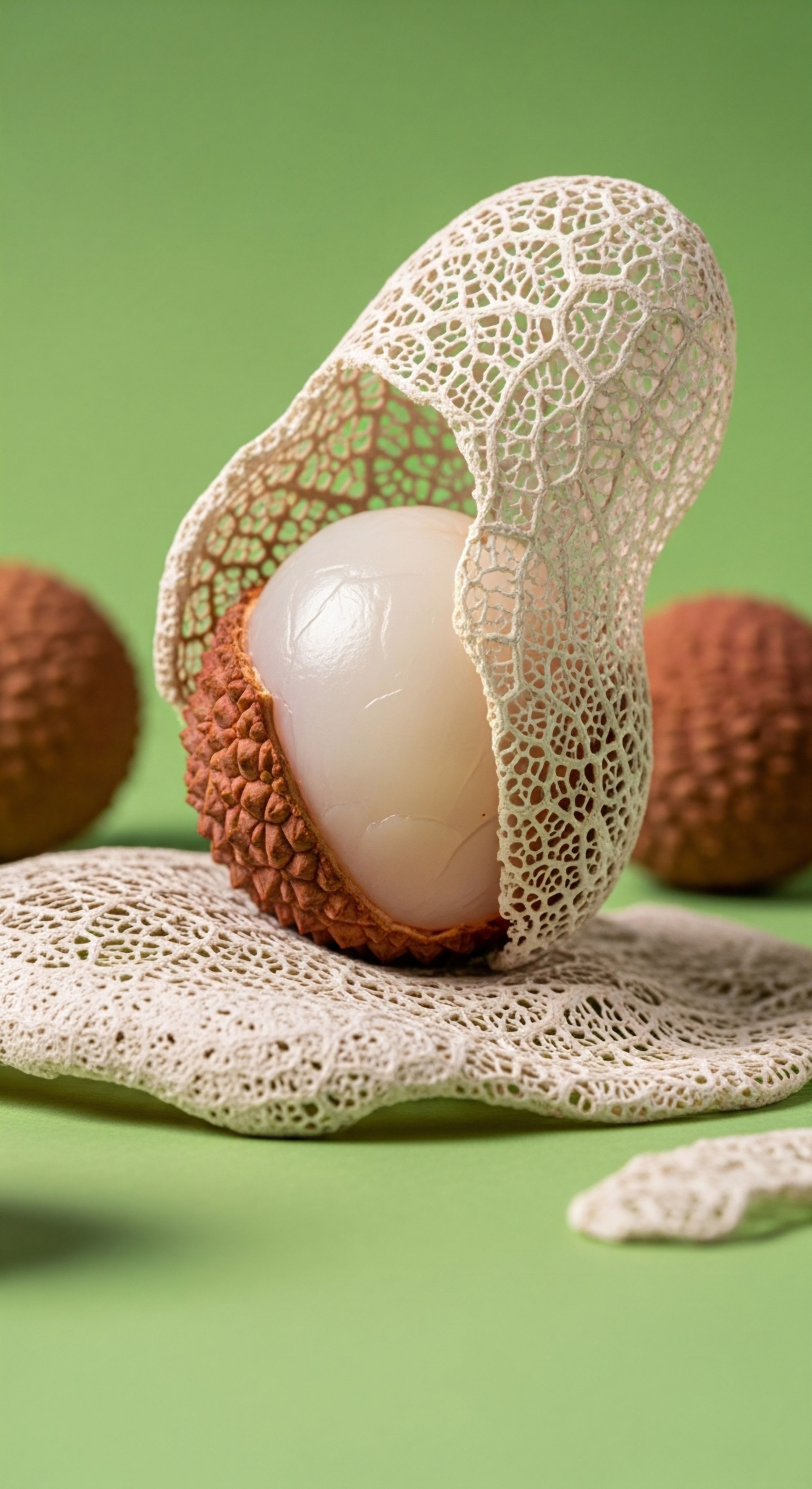

Fundamentals
The persistent fatigue, the unexplained weight gain, the sense of moving through a fog ∞ these experiences are deeply personal, yet they often point toward a common biological origin. Your body is a meticulously calibrated system, and when a central regulator like the thyroid gland loses its efficiency, the effects ripple through every aspect of your being.
The question of whether correcting nutritional deficiencies can alleviate hypothyroid symptoms is a direct inquiry into the foundational needs of this system. It is an exploration of how the very building blocks derived from our nutrition dictate the function of one of the most powerful glands in the body.
Understanding this connection begins with recognizing that the thyroid does not operate in isolation. It is a manufacturing hub for hormones that set the metabolic pace for every cell. Like any advanced manufacturing process, it requires a specific set of raw materials to function.
When these materials are scarce, production slows, and the entire system feels the deficit. This is the essence of how nutritional gaps translate into the tangible symptoms of hypothyroidism. The body is sending clear signals that its operational capacity is compromised.

The Essential Materials for Thyroid Hormone Production
The thyroid gland’s primary role is to synthesize thyroid hormones, principally thyroxine (T4) and triiodothyronine (T3). This process is entirely dependent on the availability of specific micronutrients. A deficiency in any one of these can create a bottleneck in the production line, leading to a state of reduced thyroid function.

Iodine the Core Component
Iodine is the central atom in the structure of thyroid hormones. The numbers in T4 and T3 refer to the number of iodine atoms attached to the hormone molecule. The thyroid gland is uniquely designed to capture iodide from the bloodstream and concentrate it, a testament to this element’s singular importance.
Without sufficient iodine, the thyroid cannot produce hormones, leading to a condition known as iodine deficiency, a primary cause of hypothyroidism and goiter (an enlargement of the thyroid gland) worldwide. The body cannot produce iodine, so it must be obtained through diet. Iodized salt, seafood, and dairy products are common dietary sources.

Selenium the Master Converter
While the thyroid produces mostly T4, this is the less active form of the hormone. The conversion of T4 into the much more potent T3 occurs primarily in other tissues, like the liver and kidneys. This conversion is executed by a family of enzymes called deiodinases, which are selenium-dependent.
A selenium deficiency impairs this critical activation step, meaning that even if T4 levels are adequate, the body may not have enough active T3 to manage its metabolic needs. Selenium also functions as a powerful antioxidant, protecting the thyroid gland from the oxidative stress generated during hormone synthesis.
Correcting specific nutrient gaps can directly support the thyroid’s ability to produce and activate its essential hormones.

The Supporting Cast Iron and Zinc
Beyond the core components of iodine and selenium, other minerals play vital supporting roles in the intricate biochemistry of thyroid health. Their absence can subtly but significantly undermine the entire process, contributing to the symptoms of an underactive thyroid.
Iron is a crucial component of thyroid peroxidase (TPO), an enzyme that is indispensable for two key steps in thyroid hormone synthesis ∞ attaching iodine to the thyroglobulin protein and coupling iodinated tyrosine residues to form T4 and T3. Iron deficiency, a common condition, particularly in women, can directly reduce the efficiency of TPO, thereby limiting hormone production. This creates a challenging cycle, as hypothyroidism itself can impair iron absorption from the gut, perpetuating the deficiency.
Zinc is another mineral that has a multifaceted relationship with thyroid function. It is necessary for the synthesis of both thyroid-releasing hormone (TRH) from the hypothalamus and thyroid-stimulating hormone (TSH) from the pituitary gland, the upstream signals that tell the thyroid to get to work.
Zinc also plays a structural role in the receptors that allow T3 to bind to cell nuclei and exert its metabolic effects. A deficiency can therefore disrupt the entire thyroid signaling axis, from initial command to final action. Like iron, zinc absorption can also be reduced in a hypothyroid state, creating a feedback loop that exacerbates the condition.
These deficiencies do not exist in a vacuum. Often, suboptimal levels of several nutrients stack upon one another, creating a cumulative burden on the thyroid system. Addressing these nutritional foundations is a logical and empowering first step in supporting thyroid function and potentially alleviating the pervasive symptoms that disrupt daily life.


Intermediate
Advancing beyond the foundational understanding of nutrient requirements reveals a more complex and interconnected system. The link between nutritional status and hypothyroid symptoms is governed by precise biochemical pathways and intricate feedback loops. For an individual experiencing the persistent challenges of thyroid dysfunction, comprehending these mechanisms provides a clear rationale for targeted nutritional protocols. It moves the conversation from what the thyroid needs to how it uses these essential components and what happens when the supply chain is disrupted.
The endocrine system functions as a highly sophisticated communication network. Hormones are the chemical messengers, and their production, activation, and reception must be flawlessly coordinated. Nutritional deficiencies act as interference in this network, scrambling signals and delaying messages. The clinical presentation of hypothyroidism is the systemic consequence of this communication breakdown. Examining the roles of selenium, iron, and vitamin D from this perspective illuminates their profound impact on thyroid physiology and autoimmune regulation.

Selenium’s Role in Hormone Activation and Thyroid Protection
The thyroid gland is the organ with the highest concentration of selenium per gram of tissue, a clear indicator of its critical role. This concentration is primarily due to the presence of a unique class of proteins known as selenoproteins, which have selenium incorporated into their structure. These proteins are central to thyroid function.
- Deiodinase Enzymes ∞ The conversion of the prohormone T4 to the active hormone T3 is catalyzed by deiodinase enzymes. Type 1 and Type 2 deiodinases are selenoproteins that remove an iodine atom from T4, a process essential for generating the majority of the body’s T3. A selenium deficit directly impairs this activation pathway, leading to a functional T3 deficiency even when T4 levels appear normal. This can explain why an individual might still experience hypothyroid symptoms despite having TSH and T4 levels within the standard reference range.
- Glutathione Peroxidases ∞ The process of thyroid hormone synthesis generates hydrogen peroxide (H2O2), a potent oxidant. While necessary for the iodination process, excess H2O2 can cause significant oxidative damage to thyroid cells. Glutathione peroxidases, another family of selenoproteins, are powerful antioxidants that neutralize this excess H2O2, protecting the thyroid tissue from inflammation and damage. In selenium deficiency, this protective mechanism is weakened, leaving the gland vulnerable to injury, which is a key factor in the development of autoimmune thyroiditis.
A deficiency in selenium directly hinders the conversion of T4 to the active T3 hormone and compromises the thyroid’s antioxidant defenses.

The Interplay of Iron Deficiency and Thyroid Peroxidase
Iron’s influence on thyroid health is centered on its role as a cofactor for the enzyme thyroid peroxidase (TPO). TPO is a heme-containing enzyme, meaning it requires iron to function correctly. This enzyme is the workhorse of thyroid hormone synthesis. Iron deficiency anemia is diagnosed in a significant percentage of individuals with hypothyroidism, highlighting a critical clinical connection.
The functional consequences of low iron are direct:
- Reduced TPO Activity ∞ Insufficient iron levels lead to decreased TPO activity. This slows down the entire hormone production line, from the oxidation of iodide to its incorporation into thyroglobulin. The result is a diminished output of both T4 and T3, contributing directly to a hypothyroid state.
- Impaired T4 to T3 Conversion ∞ Some evidence suggests that iron deficiency may also inhibit the peripheral conversion of T4 to T3, further compounding the issue of low active hormone levels.
- The Vicious Cycle ∞ Hypothyroidism itself can cause or worsen iron deficiency. Reduced levels of thyroid hormone can decrease the production of stomach acid, which is necessary for iron absorption. This creates a self-perpetuating cycle where low thyroid function leads to low iron, and low iron further suppresses thyroid function. This is why screening for iron deficiency (specifically ferritin levels) is a crucial step in the comprehensive evaluation of a patient with persistent hypothyroid symptoms.

Vitamin D and Its Immunomodulatory Function
What is the connection between vitamin D and autoimmune thyroid disease? Research increasingly points to vitamin D’s role as a potent modulator of the immune system. Hashimoto’s thyroiditis, the most common cause of hypothyroidism in iodine-sufficient regions, is an autoimmune condition where the immune system mistakenly attacks and destroys thyroid tissue.
Observational studies have consistently shown a strong correlation between low vitamin D levels and the prevalence of autoimmune thyroid diseases, including Hashimoto’s. The vitamin D receptor (VDR) is expressed on the surfaces of immune cells, such as T-cells and B-cells, suggesting a direct mechanism of action.
Adequate vitamin D levels are thought to help maintain immune tolerance, preventing the immune system from attacking the body’s own tissues. While the exact mechanisms are still being elucidated, it is hypothesized that vitamin D deficiency may contribute to the loss of this tolerance, allowing the autoimmune attack on the thyroid to proceed unchecked. Supplementation in deficient individuals has been shown in some studies to reduce the levels of anti-TPO antibodies, a key marker of the autoimmune process.
The following table summarizes the key functions and deficiency impacts of these critical nutrients:
| Nutrient | Primary Role in Thyroid Function | Impact of Deficiency |
|---|---|---|
| Selenium | Cofactor for T4 to T3 conversion (deiodinases); Antioxidant protection (glutathione peroxidases) | Impaired T3 activation; Increased oxidative damage and inflammation |
| Iron | Essential component of thyroid peroxidase (TPO) for hormone synthesis | Reduced T4 and T3 production; Worsening of fatigue |
| Vitamin D | Modulation of the immune system; Maintenance of immune tolerance | Increased risk and potential progression of autoimmune thyroid disease (Hashimoto’s) |


Academic
A granular analysis of the relationship between micronutrient status and thyroid homeostasis reveals a deeply integrated network of biochemical and immunological pathways. The assertion that nutritional correction can alleviate hypothyroid symptoms is substantiated by a wealth of molecular evidence.
This exploration moves into the realm of selenoproteomics, iron-dependent enzymatic kinetics, and the nuanced immunomodulatory actions of vitamin D, providing a systems-biology perspective on thyroid pathology. The focus here is on the precise molecular mechanisms through which these deficiencies disrupt thyroid function, particularly in the context of autoimmune thyroiditis (AITD).

The Selenoproteome and Its Centrality in Thyroid Autoimmunity
The human genome codes for 25 selenoproteins, and the thyroid gland exhibits the highest expression of many of them. This preferential expression underscores their indispensable role in local thyroid metabolism and defense. A deficiency in selenium leads to a hierarchical system of selenium conservation, where the brain and endocrine glands are prioritized, but chronic deficiency inevitably compromises the function of key thyroidal selenoproteins.

Deiodinases and Intracellular Euthyroidism
The deiodinase family (DIO1, DIO2, DIO3) are selenoenzymes that control the activation and inactivation of thyroid hormones, effectively regulating intracellular thyroid status. DIO1 and DIO2 catalyze the conversion of T4 to T3, while DIO3 inactivates both T4 and T3. Selenium deficiency reduces the expression and activity of these enzymes, leading to altered T3/T4 ratios.
A meta-analysis of randomized controlled trials has shown that selenium supplementation in patients with Hashimoto’s thyroiditis (HT) can significantly decrease serum TPO antibody levels. Furthermore, in patients not receiving levothyroxine, selenium supplementation was associated with a modest decrease in TSH levels, suggesting an improvement in thyroid function itself. This effect is likely mediated by the restoration of deiodinase activity and the reduction of oxidative stress.

Glutathione Peroxidases and Oxidative Damage
Thyroid hormone synthesis is an oxidative process that generates reactive oxygen species (ROS), primarily H2O2. Glutathione peroxidases (GPXs) are a family of selenoproteins that serve as the primary antioxidant defense within the thyrocyte, neutralizing ROS and preventing lipid peroxidation and DNA damage. In a state of selenium deficiency, GPX activity is diminished.
This allows H2O2 to accumulate, leading to increased inflammation and cellular damage. This chronic inflammatory state is believed to be a key trigger for the initiation and propagation of autoimmunity in genetically susceptible individuals. The damaged thyrocytes may release intracellular antigens, such as thyroglobulin (Tg) and thyroid peroxidase (TPO), which are then presented to the immune system, breaking self-tolerance and leading to the production of autoantibodies (TPOAb and TgAb).
The integrity of the selenoproteome is a prerequisite for maintaining both hormonal balance and immune tolerance within the thyroid gland.

Iron Deficiency and Its Impact on Thyroid Enzymology and Systemic Symptoms
The biochemical link between iron and thyroid function is absolute. Thyroid peroxidase (TPO), the key enzyme in thyrogenesis, is a heme-dependent peroxidase. Iron is a central component of the heme prosthetic group, and its deficiency directly impacts the enzyme’s catalytic efficiency.
This has several profound consequences:
- Impaired Organification and Coupling ∞ Reduced TPO activity due to iron deficiency leads to inefficient iodide organification (the binding of iodine to tyrosine residues on thyroglobulin) and coupling of iodotyrosines (MIT and DIT) to form T4 and T3. This results in decreased hormone synthesis and can precipitate or exacerbate hypothyroidism.
- Synergistic Effect with Iodine Deficiency ∞ Iron deficiency can worsen the effects of iodine deficiency. The body’s ability to utilize iodine is compromised when iron stores are low, making the thyroid more susceptible to the development of goiter and hypothyroidism.
- Anemia and Fatigue ∞ The fatigue experienced in hypothyroidism is often multifactorial. While low metabolic rate is a primary cause, coexistent iron deficiency anemia contributes significantly. Up to 60% of patients with overt hypothyroidism may have anemia. Correcting the iron deficiency is often necessary to fully resolve the symptom of fatigue, even after thyroid hormone replacement has normalized TSH levels.
The following table details the findings of a meta-analysis on selenium supplementation in Hashimoto’s thyroiditis, illustrating the measurable impact of nutritional intervention on key biomarkers.
| Outcome Measured | Effect of Selenium Supplementation | Associated Mechanism |
|---|---|---|
| TSH Levels (in untreated patients) | Significant Decrease | Improved T4 to T3 conversion, reduced autoimmune pressure |
| TPO Antibody Levels | Significant Decrease | Reduced oxidative stress, improved immune modulation |
| Adverse Effects | Comparable to Placebo | Demonstrates safety of supplementation at appropriate doses |

How Does Vitamin D Regulate Thyroid Autoimmunity?
The discovery of the vitamin D receptor (VDR) on nearly all cells of the immune system, including antigen-presenting cells (APCs), T-cells, and B-cells, has repositioned vitamin D as a critical immunomodulatory hormone. Its deficiency is strongly implicated as an environmental risk factor for a variety of autoimmune diseases, including AITD.
The mechanisms are multifaceted:
- Modulation of T-Cell Differentiation ∞ Vitamin D promotes the differentiation of T-helper cells towards a Th2 phenotype, which is generally associated with anti-inflammatory responses, while inhibiting the pro-inflammatory Th1 and Th17 pathways that are dominant in Hashimoto’s thyroiditis.
- Regulation of Antigen-Presenting Cells ∞ Vitamin D can inhibit the maturation and function of dendritic cells, a type of APC. This reduces their ability to present thyroid autoantigens to T-cells, thereby dampening the initial trigger of the autoimmune cascade.
- Enhancement of Regulatory T-Cells (Tregs) ∞ Vitamin D supports the function of Tregs, a specialized subset of T-cells whose primary role is to suppress autoimmune responses and maintain self-tolerance.
A meta-analysis of observational studies has confirmed that patients with AITD have significantly lower serum vitamin D levels compared to healthy controls. While large-scale, long-term intervention trials are still needed to establish a definitive causal link and guide supplementation recommendations for prevention, the existing evidence strongly supports the correction of vitamin D deficiency as an adjunct therapy in the management of autoimmune hypothyroidism.
The goal is to restore immune homeostasis and potentially slow the progression of the autoimmune attack on the thyroid gland.

References
- Wichman, J. Winther, K. H. Bonnema, S. J. & Hegedüs, L. (2020). Selenium Supplementation in Patients with Hashimoto Thyroiditis ∞ A Systematic Review and Meta-Analysis of Randomized Clinical Trials. Thyroid, 30(11), 1670 ∞ 1682.
- Wang, S. Wu, Y. Zuo, Z. Zhao, Y. & Wang, K. (2018). The effect of vitamin D supplementation on thyroid autoantibody levels in patients with autoimmune thyroid disease ∞ a systematic review and a meta-analysis. Endocrine, 59(3), 499 ∞ 505.
- Fallahi, P. Ferrari, S. M. Elia, G. Ragusa, F. Paparo, S. R. & Antonelli, A. (2020). The role of vitamin D in autoimmune thyroid diseases. Journal of Endocrinological Investigation, 43(11), 1547 ∞ 1559.
- Eftekhari, M. H. Keshavarz, S. A. Jalali, M. Elguero, E. Eshraghian, M. R. & Simondon, K. B. (2006). The relationship between iron status and thyroid hormone concentration in iron-deficient adolescent Iranian girls. Asia Pacific journal of clinical nutrition, 15(1), 50.
- Rayman, M. P. (2019). Multiple nutritional factors and thyroid disease, with particular reference to autoimmune thyroid disease. The Proceedings of the Nutrition Society, 78(1), 34-44.
- Triggiani, V. Tafaro, E. Giagulli, V. A. Sabbà, C. Resta, F. Licchelli, B. & Guastamacchia, E. (2008). Role of iodine, selenium and other micronutrients in thyroid function and disorders. Endocrine, Metabolic & Immune Disorders-Drug Targets (Formerly Current Drug Targets-Immune, Endocrine & Metabolic Disorders), 8(3), 195-207.
- Nussey, S. & Whitehead, S. (2001). Endocrinology ∞ An Integrated Approach. BIOS Scientific Publishers.
- Beserra, J. Morais, J. & Severo, J. (2019). The Role of Zinc in Thyroid Hormones Metabolism. International Journal for Vitamin and Nutrition Research, 89(1-2), 80-88.
- Soliman, A. T. De Sanctis, V. Yassin, M. Wagdy, M. & Soliman, N. (2014). Chronic anemia and thyroid function. Acta bio-medica ∞ Atenei Parmensis, 85(1), 18 ∞ 27.
- Talaei, A. Ghorbani, F. & Asemi, Z. (2018). The effects of vitamin D supplementation on thyroid function in women with polycystic ovary syndrome and normal-weight women with vitamin D deficiency. Journal of research in medical sciences ∞ the official journal of Isfahan University of Medical Sciences, 23, 94.

Reflection

Calibrating Your Internal Systems
The information presented here provides a map of the intricate biological landscape that governs your thyroid health. It details the specific raw materials your body requires and the precise processes it employs to maintain metabolic equilibrium. This knowledge is a powerful tool, shifting the perspective from one of passive suffering to one of active participation in your own wellness.
The symptoms you experience are not abstract complaints; they are signals from a system requesting the specific support it needs to function optimally.
Consider your own unique health narrative. Where do you see intersections between your lived experience and the biological mechanisms described? This journey of understanding is the first, most critical step. The path forward involves a personalized strategy, a careful calibration of your internal environment based on your specific needs. The ultimate goal is to restore the body’s innate capacity for vitality, allowing you to function with clarity and energy. Your biology is not your destiny; it is your guide.



